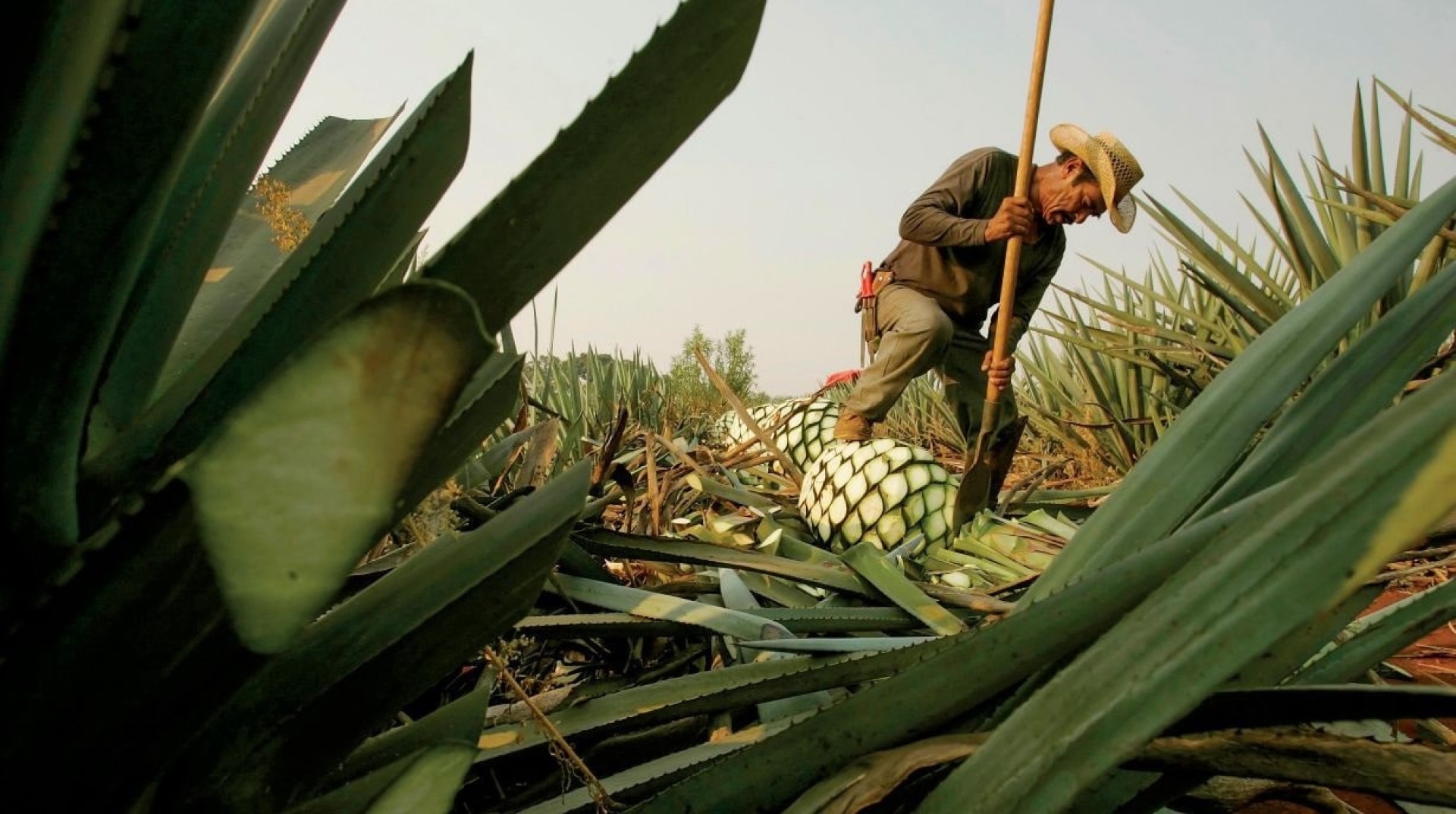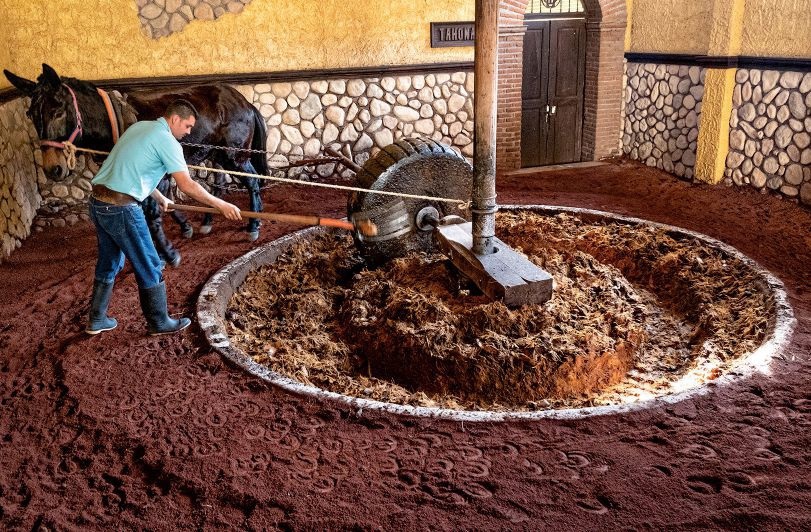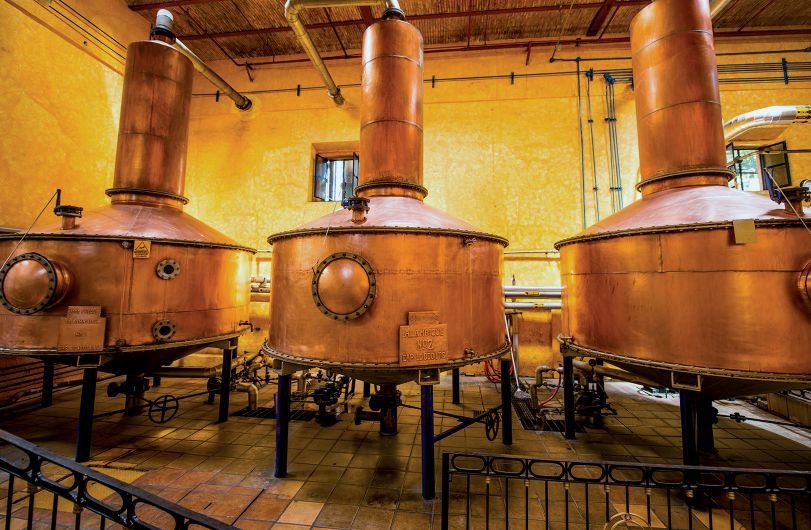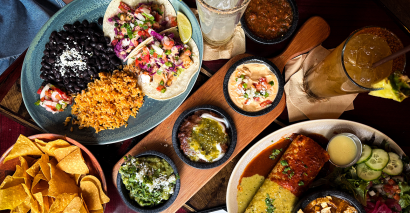
A jimador (agave harvester) uses a machete-like tool called a cao. ERICH SCHLEGEL / ALAMY STOCK PHOTO
Tequila 101
Everything you need to know about Mexico's national spirit
October 6, 2025 –––––– Laura Pelner
Tequila truly embodies the spirit of Mexico, in both the literal sense—it’s the country’s national drink—and more figuratively for its importance in Mexican culture and tradition. The story of tequila is woven into the country’s history. Just as bourbon is to the U.S. and scotch is to Scotland, tequila is a celebration of Mexican craftsmanship, and it has risen to become a dominant spirit for drinks enthusiasts around the world.
What Is Tequila?
Put simply, tequila is a distilled spirit made from the blue Weber agave plant. But of course, there’s a lot more to it than that. To be classified as tequila, a spirit must be made from at least 51% blue Weber agave in one of five Mexican states. Tequila is big business in Mexico, and its production is managed by the governing agency Consejo Regulador del Tequila (Tequila Regulatory Council, TRC), which oversees everything from agave harvesting to distillation to bottling and labeling, ensuring specific quality standards are met at each step in the process.
Tequila’s Origin Story
The spirit has a rich history dating back to the 16th century. The vast majority of tequila is made in the Mexican state of Jalisco, though there are four other states allowed to produce it: Guanajuato, Michoacán, Nayarit, and Tamaulipas. In total, the appellation of origin for tequila covers 180 municipalities across these five states and spans roughly 27 million acres.
All About Agave
There are more than 200 types of agave growing in Mexico, but only one can be used to make tequila—the Weber azul, or blue Weber variety. Agave plants are large succulents with spiky leaves and can reach up to eight feet tall. The plants have a large stalk at their center that can grow even higher and sprout flowers. Tequila is made from the agave’s heart—called the piña—and harvested by jimadors. The blue Weber agave is preferred for tequila because of its high sugar content and the speed at which it grows. While blue Weber age a bit faster than many of their agave counterparts, it still takes 5 to 7 years for one plant to fully mature and be ready for making tequila.
♦♦♦ Agave harvesters are called jimadors, and they’re charged with knowing when an agave plant is mature and ready for harvesting. To cut agave, jimadors use something called a coa, a machete-like tool with a long wooden handle and a sharp rounded blade. The piña, the heart of an agave plant used to make tequila, looks like a large pineapple. It can weigh up to 150 pounds. Once an agave is harvested, the plant must be uprooted and replaced with a new seedling.
Regional Differences
The primary agave-growing region in Jalisco has two sub-areas: the Highlands of Los Altos and the Lowlands of El Valle. Each area has its own terroir—the unique characteristics of the soil and environment that influence the plants growing in that area—and as a result tequilas from each region have distinct attributes. The Highlands are roughly 7,500 feet above sea level and have red clay soil that’s rich in iron. Agave grown here is subject to more sun, resulting in a sweeter flavor profile and oftentimes fruitier tequilas. Meanwhile the Lowlands, which are a few thousand feet lower than Los Altos (yet misnamed because they’re still 3,500-5,200 feet above sea level) have dark and mineral-rich volcanic soil due to the inactive Tequila Volcano in the area. Lowland agave is more herbal and earthy, resulting in more vegetal and spicier tequilas.

Tequila Types
There are two types of tequilas, mixto and 100% agave. As the name suggests, mixtos include additives and other ingredients. They can contain 49% flavoring agents and non-agave-based sugars, including cane sugar and corn syrup, and are most often used in cocktails. Meanwhile, 100% agave tequilas contain almost entirely agave distillate. The “almost” is key because the TRC allows up to 1% additives by total liquid weight, even in 100% agave spirits.
There are four items legally allowed to be added to 100% agave tequila: glycerin to thicken it and enhance mouthfeel, jarabe sugar syrup for sweetness, caramel coloring to make the spirit appear darker, and oak extract to add aroma and flavor. The TRC does not require producers to disclose or list any additives on their labels as long as they’re within 1% or less by weight.
Tequila’s Expanding Universe
As tequila’s popularity continues to rise, agave spirits producers are broadening the category in interesting ways. One of the hottest new entrants, though not officially recognized, is cristalino. These are aged tequilas that have been filtered through charcoal to remove color while maintaining the barrel’s flavor attributes.
Mezquila is also not an official category, largely because it isn’t technically tequila. Instead, it’s a blend of 100% blue Weber agave tequila with 100% espadín agave mezcal. The first brand to launch a mezquila, Santo Spirits by rock star Sammy Hagar and chef Guy Fieri, debuted their product in 2017 and launched it globally in 2024.

Tequila Classifications
There are five legally defined classes of tequila, the most popular being blanco, reposado, and añejo, though joven and extra añejo are also recognized classifications by the Mexican government.
BLANCO (also called silver, plata, white, or platinum) Generally unaged and clear upon bottling. Blanco tequilas can legally rest for up to 60 days in stainless steel tanks or oak. Tequila purists believe blanco is the purest form of tequila and the true test of a producer’s talent, as it showcases agave in its cleanest, most unadulterated form.
JOVEN (also called oro or gold) A blend of blanco and aged tequilas
REPOSADO Aged in French oak or white oak barrels for at least 2 months, and as a result is often golden in color as it absorbs some attributes from the wood.
AÑEJO Aged for at least 1 year in French or white oak barrels that do not exceed 600 liters total capacity. These are often darker amber in color and have a richer, more complex flavor profile due to their extended aging.
EXTRA AÑEJO The oldest tequila expressions, these are aged for 1-3 years in French or white oak barrels with a maximum capacity of 600 liters.




.png?resize=410x0)